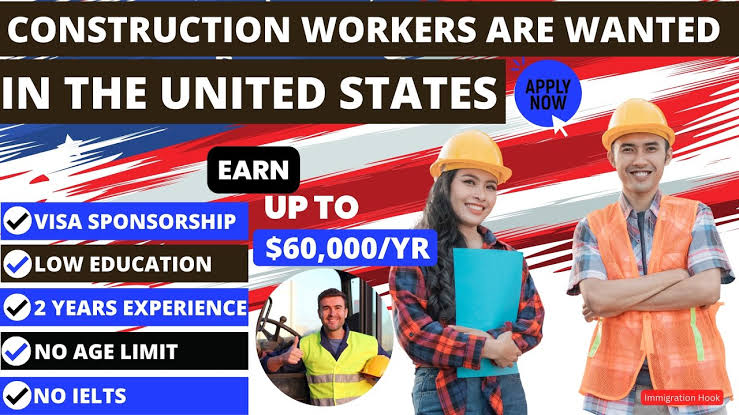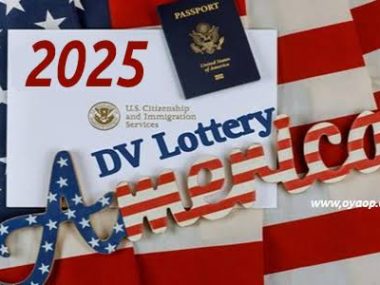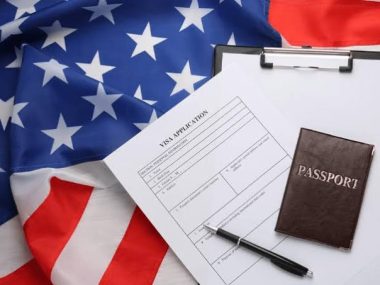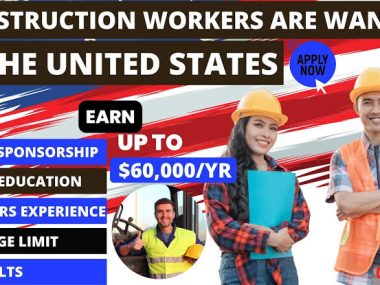Relocate to the USA and Get Paid £63,000 ($80,000) Through the Construction Visa Scheme: A Practical 2025 Guide for Skilled Workers
Introduction: A Rare Window of Opportunity
In a world where migration stories are often about struggle and sacrifice, the chance to get paid to move abroad sounds suspiciously good to be true. But for thousands of skilled construction workers, the doors to the United States have swung open — and they’re offering not just a steady job but financial support worth up to $80,000 (£63,000) to help you settle in.
This isn’t a marketing gimmick or a vague political promise. It’s a response to a very real labour crisis in the American construction industry — one that’s left companies scrambling to plug skills gaps in trades like carpentry, plumbing, welding and electrical work. And for overseas workers who meet the bar, that means the chance to build a secure life, send savings home, and possibly gain a route to permanent residency.
In this guide, you’ll find exactly what you need to know:
Why the US is paying foreign workers to relocate now
What the Construction Visa Sponsorship Programme involves
Who qualifies and what the process really looks like
How to protect yourself from scams and disappointment
And where to start, step by step, if you’re serious about going
So let’s break this down honestly, with a critical eye — and make sure you know how to spot a genuine chance from a slick pitch.
- The Construction Skills Crisis: Why America is Looking Abroad
Few industries have changed so dramatically — or been hit so hard — in recent years. According to the U.S. Bureau of Labor Statistics, demand for construction labour is projected to keep rising at roughly 4% each year through the next decade. On paper, that’s great for anyone in the trade. In reality, it’s left huge contractors desperate for hands.
Several factors explain this shortfall:
An ageing domestic workforce — many skilled tradespeople are retiring.
Not enough young Americans entering the trades, despite rising wages.
A boom in new projects driven by massive federal and state infrastructure spending. Think roads, bridges, schools, hospitals, renewable energy sites — all of which require boots on the ground.
A continued housing squeeze. New homes and commercial buildings can’t go up fast enough to meet demand.
In the words of one Midwest contractor quoted by the Wall Street Journal: “We simply don’t have the people. We’ve raised wages. We’ve trained apprentices. We’re still short by hundreds every season.”
When you can’t hire locally, the next step is clear: look abroad.
- What is the U.S. Construction Visa Sponsorship Programme?
At its simplest, it’s a legal route for skilled and semi-skilled tradespeople to take up jobs with U.S. companies who sponsor their visa — paying for the paperwork and often much more besides.
Here’s the key point: this is not some government handout. It’s a commercial necessity. Employers must prove they’ve made genuine efforts to hire locally and still come up short. Only then can they hire foreign labour under specific visas.
So where does the money come in?
Employers know that moving your entire life is costly and stressful. To make the jobs attractive — and to compete with rival contractors — many offer financial packages worth up to $80,000 (£63,000). This can cover:
Flights and initial relocation costs
Temporary housing or accommodation stipends
Daily living allowances for the first few months
Sometimes, tool allowances and local training costs
In other words, the visa sponsorship goes hand in hand with a real incentive to get you on site, working safely and quickly.
- Which Visas Are Relevant for Construction Workers?
Let’s get specific. These are the three main routes:
a) H-2B Temporary Non-Agricultural Worker Visa
One of the most common pathways for construction jobs. The H-2B allows U.S. employers to hire foreign workers for temporary or seasonal roles in non-agricultural industries.
Key facts:
Initial stay: up to 1 year, with renewals possible up to 3 years in total.
Your employer must show they can’t find enough local workers.
Once your visa expires, you must leave — unless you line up a new, approved employer.
Good for: Short-term projects, peak seasons, and workers who may prefer to return home after the job ends.
Limitations: Does not by itself lead to permanent residency. It’s genuinely temporary.
b) EB-3 Skilled Worker Visa (Green Card Pathway)
If you’re more ambitious and want to settle permanently, the EB-3 is worth considering.
Key facts:
Suitable for workers with at least two years of training or relevant experience.
Also covers some “unskilled” roles if they meet the labour shortage criteria.
Provides a direct path to permanent residency — the Green Card.
Your employer must complete a labour certification proving they couldn’t hire domestically.
Good for: Those planning to build a life in the States and bring family over.
Limitations: Takes longer to process than an H-2B and involves more bureaucracy — but the reward is bigger: legal permanent residency.
c) TN Visa (For Canadian and Mexican Workers)
Available only to Canadian and Mexican citizens under the United States–Mexico–Canada Agreement (USMCA).
Key facts:
Covers some professional roles that may include supervisory construction trades or specialist roles.
Valid for up to 3 years, with renewals possible.
Quicker and cheaper to process.
- Who’s Eligible? A Quick Reality Check
There’s no sense sugar-coating this. Not everyone qualifies.
✅ You’ll need demonstrable skills or experience in your trade — think carpentry, welding, plumbing, electrical work, masonry, roofing, or operating heavy machinery.
✅ Many companies prefer or require some vocational training, trade school certificates or apprenticeships — even if not strictly compulsory for every H-2B job.
✅ Basic English is often needed for safety and site instructions.
✅ You must be in good health, with a clean criminal record.
✅ You need an actual employer ready to sponsor you. You can’t apply for the visa on your own and hope for the best.
✅ You must be over 18 and able to adapt to new working conditions.
- Real Stories: What It Looks Like in Practice
“I doubled my income overnight.”
Sarah, an electrician from the Philippines, now works for a large Californian contractor. Her employer covered three months of accommodation, a generous tool allowance and helped her kids settle in local schools. “I earned in my first year what I’d make in three at home,” she says. “I didn’t believe the ad at first. But it’s real — if you get the right employer.”
“I plan to stay for good.”
Carlos, 28, a plumber from Mexico, took an H-2B role in Texas. He’s now switching to an EB-3 visa, hoping to secure a Green Card. “It’s hard work, but it’s honest. The company paid my rent for six months while I found a place. I’ve sent money home, bought land, and I’m not going back yet.”
Are these stories typical? They’re becoming more common — but note both had reputable employers. That’s your first line of defence against scams.
- How to Apply — Without Getting Ripped Off
This is where too many hopeful applicants get tripped up by fake offers or dodgy “agents.” Here’s how to do it properly:
Step 1: Find Legitimate Employers
Use credible job boards. Check major U.S. construction firms’ official careers pages.
Ask for references: real employers should provide verifiable company details.
Look for clear terms: visa sponsorship should be explicit, not vague.
Step 2: Prepare a Solid CV
Highlight your trade skills, certifications, and relevant work history.
Include any English language abilities or international experience.
Step 3: Interview
Be prepared for remote interviews, trade tests, or skill demonstrations.
Never pay upfront “placement fees” for a job. Reputable employers cover recruitment costs.
Step 4: Get a Proper Job Offer
Your offer letter should specify your role, salary, location, expected hours, and relocation benefits.
Insist on clarity: don’t accept vague promises about “possible sponsorship later.”
Step 5: The Paperwork
Your employer files the visa petition (e.g., Form I-129 for H-2B) with the U.S. Citizenship and Immigration Services (USCIS).
For EB-3, the process is longer: it involves the Department of Labor’s labour certification step.
Step 6: Embassy Interview
Attend a consular interview in your home country.
Bring your passport, job offer letter, health records, and police clearance.
Step 7: Travel and Start Work
Once approved, your employer should help you book flights and arrange initial accommodation.
- Understanding the Fine Print: Salaries, Benefits and Reality
Average salaries for construction workers in the U.S. typically run between $50,000 and $80,000 per year. Highly skilled roles — electricians, welders, site supervisors — can break six figures in some states.
But remember:
Costs vary hugely by region. Wages in New York or California are higher, but so is rent.
Many reputable employers provide medical insurance, paid leave and pension plans.
Always read the contract: ensure overtime pay and safety cover are clear.
- Smart Relocation Tips
🔑 Emergency Fund: Sponsorship may cover a lot, but unexpected costs pop up. Have savings for at least three months.
🔑 Improve Your English: You don’t need perfect fluency, but good communication keeps you safe and employable.
🔑 Know Your Rights: Read up on U.S. labour laws. A union or legal aid group can help if you’re mistreated.
🔑 Connect Locally: Many new arrivals join Facebook groups or WhatsApp communities to share advice.
🔑 Plan Housing: Some firms provide initial housing; others offer a stipend. Don’t assume — confirm in writing.
- Pitfalls: What Could Go Wrong?
Even with genuine offers, things can go south:
Visa quotas for the H-2B get snapped up quickly each year. Missing deadlines means waiting months for the next window.
Not all employers treat foreign workers well. Always check reviews and speak to past workers if possible.
Some “agents” charge huge illegal fees. Never pay anyone for a job offer. Genuine employers pay recruitment costs.
- The Big Picture: Is It Worth It?
Relocating your life is not for the faint-hearted. But for thousands of tradespeople, the U.S. Construction Visa Programme has turned a local skill into a ticket to stable earnings, a chance to support family back home, and in some cases, a whole new life.
As Sarah puts it: “I was scared at first. Now I tell my brother to apply too.”
If you’ve got the skills, the paperwork in order, and the determination to make it work, this might just be your best move.
How to Get Started Today
✅ Update your CV.
✅ Identify companies with a history of genuine sponsorship.
✅ Check if your qualifications meet the requirements for H-2B or EB-3.
✅ Speak to a trusted recruiter if you need help — but avoid any who ask for upfront fees.
✅ Act now: construction demand is peaking, but so is competition.
Final Word
Opportunities like this don’t stay open forever. The USA’s appetite for skilled construction workers is high today — but as more local training schemes come online, the window may close.
So if you’re serious about building a life abroad and getting paid up to $80,000 to do it, start now. Do your research. Protect yourself. And step forward with your eyes open.
Useful Search Phrases:
“USA construction visa sponsorship 2025”
“Get paid to move USA construction jobs”
“Apply H-2B visa construction worker USA”
“EB-3 skilled worker visa requirements”
“Construction jobs USA no degree”
Interested? Bookmark this guide, share it with a friend in the trade, and keep an eye on verified recruitment boards. Your skills might be worth far more than you think.




